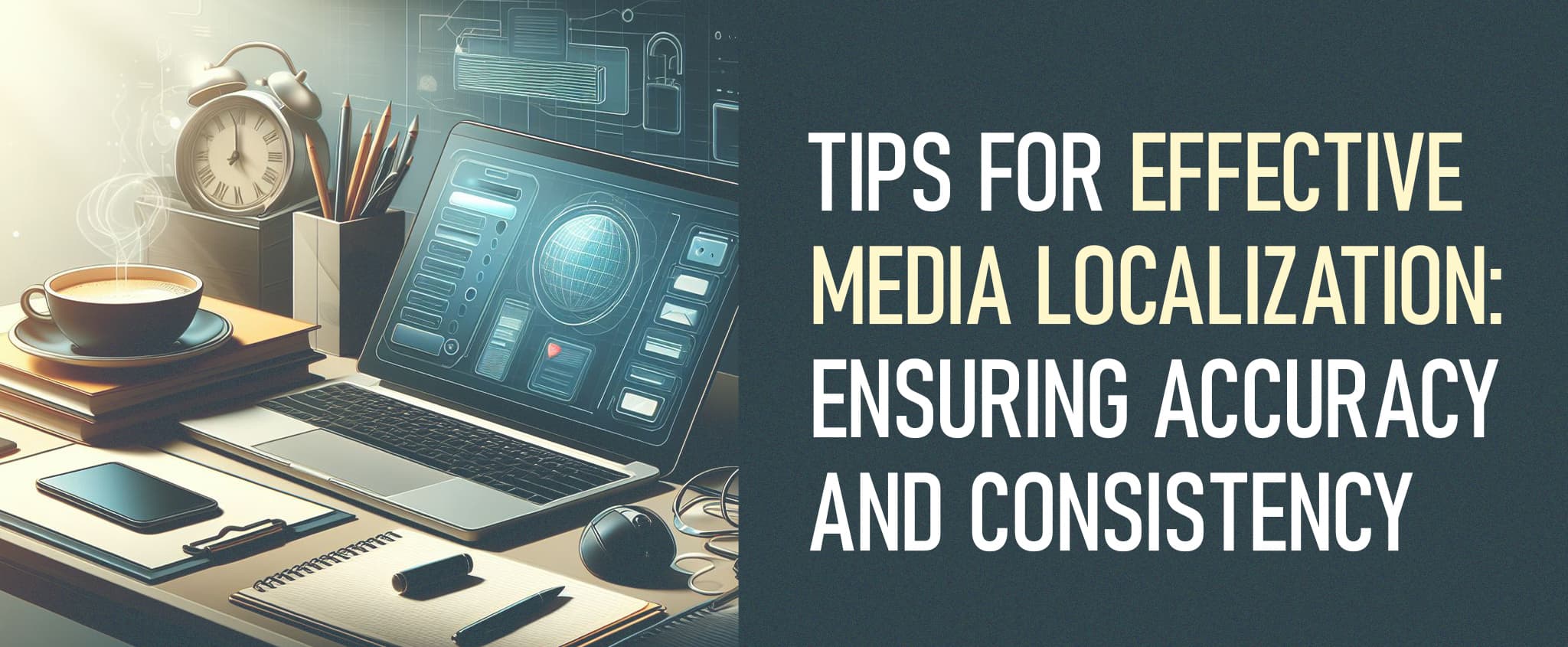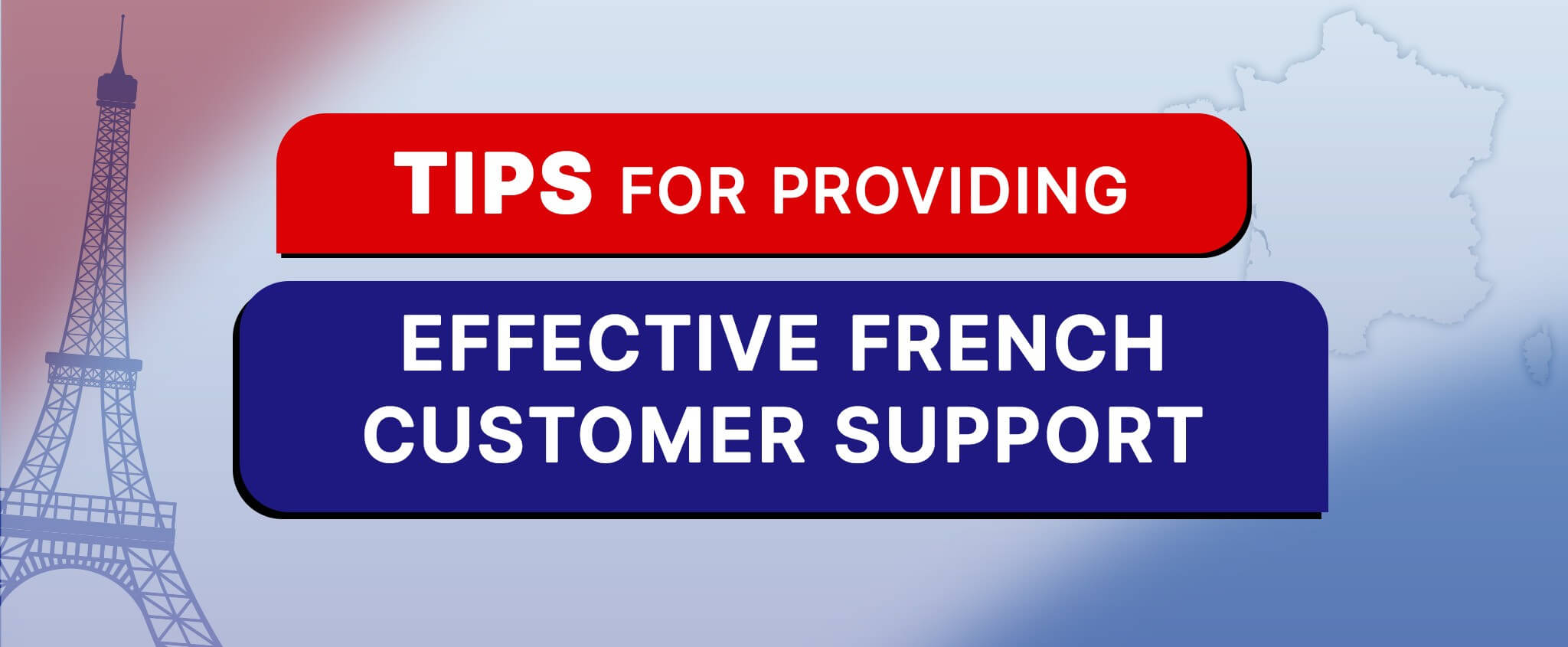Tips for Effective Media Localization: Ensuring Accuracy and Consistency
Globalization is rampant across every industry. Thus, effective media localization is vital in the accessibility of your stories. From video producers to streaming platforms, everyone is ensuring that their content reaches international audiences successfully. As such, they adapt their content to achieve that impact.
Media localization professionals approach today’s globalized world head on. With their expertise, you reach broader audiences, improve your content’s accessibility, and become more globally impactful. We gathered some media localization tips for you to consider in maintaining accurate and consistent content for your brand.
Key takeaways
- Effective media localization is essential for successfully reaching global audiences by adapting content for different languages and cultures.
- Cultural adaptation in localization is deeper than translation between languages as it ensures contextually appropriate content for target audiences.
- Choosing reputable media localization companies is crucial for brands to enjoy high-quality results of media localization.
Table of contents
- What Is Media Localization?
- Why Is Effective Media Localization Important?
- Media Localization Tips
- CCCI: Experts Dedicated to Effective Media Localization
What Is Media Localization?
Media localization is about adapting content to different languages and cultures. This process usually involves dubbing, subtitling, and voice-over services. Depending on the content’s source and target, the cultural adaptation process will vary.
Essentially, proper media localization aims to help you connect with global audiences. Furthermore, effective media localization ensures that your messages resonate across different regions accurately and respectfully.
Why Is Media Localization Important?
Media localization offers great benefits, particularly:
- Broaden audiences: Localizing media extends your reach to new markets and diverse audiences around the world. Moreover, localization helps break down language barriers. Thus, you allow people of various linguistic backgrounds to understand and appreciate your content. Likewise, you expand your potential customer base.
- Enhance engagement: Culturally adapted content fosters strong connections with viewers. Put simply, it respects and reflects a target audience’s unique customs, values, and preferences. At the same time, it maintains the original work’s essence. Meanwhile, audiences are more likely to engage and share content that resonates with their culture. Accordingly, creators enjoy increased audience loyalty and positive word-of-mouth that promotes their content.
- Increase accessibility: Ensuring accessible content is vital for inclusivity. For instance, providing localized subtitles and voice-overs ensures non-native speakers and individuals with hearing impairments can consume your content comfortably. Inclusivity broadens audiences and enhances the viewer experience. Thus, your content would be more enjoyable and easier to follow. Moreover, accessible content demonstrates a commitment to diversity, affirming your respect for different cultures.
Media Localization Tips
Understanding how professionals localize content may offer insights into the process as you globalize your brand. Here are some guidelines that media localization experts follow to achieve the best possible results:
Understand Your Audience
Understanding your audience is crucial to successful media localization strategies. It involves gaining insight into the preferences, customs, and cultural nuances of your target audience. This way, you create content that truly resonates with viewers from different places.
Successful audience analysis begins with comprehensive research into an audience’s linguistic and cultural context. Identify your target’s local customs, traditions, values, and current events. Professionally, localizers will see if these align with their regional expectations. They also pay special attention to language variations, dialects, and colloquialisms to enhance realism.
Meanwhile, targeted content is an approach that improves engagement with localized media. Using the insights that you gather from audience analysis, you can customize your content accordingly. For instance, you may adapt linguistic, referential, and visual elements to match an audience’s cultural context.
Plan for Cultural Adaptation in Localization
Cultural adaptation involves customizing media content to fit the unique customs, beliefs, and preferences of different regions. This step goes beyond basic translation. Instead, it aims to make your content contextually appropriate and relevant to the target audience.
Furthermore, cultural adaptation ensures that your content aligns with the social, cultural, and linguistic nuances of the target region. Usually, this process includes modifying specific elements to suit local tastes and expectations.
For example, you might need to change idiomatic expressions, jokes, or slang to reflect regional variations in language. Similarly, you may need to connect with your audience through cultural references like local holidays, traditions, or pop culture icons. Applying these adjustments significantly enhances the consumer’s experience.
Choose Reputable Media Localization Companies
Selecting the right provider of media localization services is critical for achieving positive results. When evaluating potential partners, consider these key factors:
- Experience: Look for a company with a proven track record in media localization. Be sure to inspect their past projects and client testimonials. These may provide insight into their expertise and ability to handle diverse content.
- Quality assurance: Reputable localization experts prioritize quality and consistency throughout the localization process. Browse their website and confirm whether they are transparent about rigorous quality checks, proofreading, and testing to ensure accurate content.
- Technology and tools: Choose a localization company that uses advanced tools and technology for localization. Examples include computer-assisted translation (CAT) tools, subtitling software, and voice-over equipment. These tools help maintain consistency and efficiency in the localization process.
Focus on Consistency and Accuracy
Successful media localization requires consistency and accuracy. Consistent translation and accurate localization across all media build a cohesive viewing experience. Thus, professionals have rigorous stages in the process where they double-check translations and adaptation.
Ensuring accuracy and alignment with the original content’s tone and style further enhances the overall viewing experience. Audiences are likely to appreciate seamless content that feels natural in their local language and culture.
Get a Professional Subtitling Service Provider
Professional subtitling services significantly enhance the reach and understanding of media content. In particular, accurate subtitles benefit audiences by making content accessible to those with language barriers and hearing impairments.
In addition, subtitles improve comprehension for those who prefer to consume media in their original language. Thus, experts aim for concise subtitles that balance readability and accuracy. These professionals ensure consistent terminology across media to enhance the viewer experience.
Pro-tip: Another professional practice in subtitling is ensuring the synchronization between audio and text. This tip helps avoid confusion for viewers and eliminates the mild annoyances that may come from watching badly timed subtitles.
Monitor Localized Content
Continuous monitoring and reviewing of localized content are essential steps in ensuring the effectiveness of media localization efforts. This ongoing process helps professionals identify any issues. Thus, they can address them promptly to maintain the high standards that the audience expects.
Implementing quality assurance standards is especially critical in achieving consistency and accuracy across all localized content. This process usually involves regular checks of translations, voice-overs, and subtitles. Accordingly, the checkers verify their alignment with the original content’s intent and style.
Quality assurance must be an ongoing part of any localization workflow. Specialized quality assurance teams might involve linguistic experts and cultural consultants. These experts can spot errors or discrepancies.
Note: Maintaining a version control system helps track changes in localized content. This process ensures consistency across different projects. Plus, it helps you manage updates more effectively.
CCCI: Experts Dedicated to Effective Media Localization
Connecting with audiences worldwide depends on the effectiveness of your media localization efforts. Effective campaigns drive success in different markets. By understanding your audience and planning for cultural adaptation, you can elevate your global content.
Furthermore, using professional services and teaming up with the right company are vital tips. Having experts on your side allows you to focus on media creation, ensuring their authenticity in your language and culture. Then, professional localizers help global audiences experience what you create.
For exceptional media localization services, count on CCCI to fulfill your needs. We keep up with the trends and apply the best practices, guaranteeing high-quality returns. As media evolves, allow us to be your localizers ensuring accuracy, consistency, and global success.






